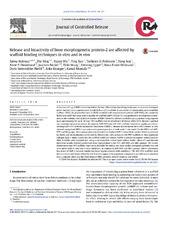| dc.contributor.author | Suliman, Salwa | en_US |
| dc.contributor.author | Xing, Zhe | en_US |
| dc.contributor.author | Wu, X | en_US |
| dc.contributor.author | Xue, Ying | en_US |
| dc.contributor.author | Pedersen, Torbjørn Østvik | en_US |
| dc.contributor.author | Sun, Y | en_US |
| dc.contributor.author | Døskeland, Anne Marie Simonne | en_US |
| dc.contributor.author | Nickel, Joachim | en_US |
| dc.contributor.author | Waag, Thilo | en_US |
| dc.contributor.author | Lygre, Henning | en_US |
| dc.contributor.author | Finne Wistrand, Anna | en_US |
| dc.contributor.author | Steinmüller-Nethl, Doris | en_US |
| dc.contributor.author | Krueger, Anke | en_US |
| dc.contributor.author | Mustafa, Kamal Babikeir Eln | en_US |
| dc.date.accessioned | 2015-07-31T10:48:19Z | |
| dc.date.available | 2015-07-31T10:48:19Z | |
| dc.date.issued | 2015-01-10 | |
| dc.identifier.issn | 0168-3659 | |
| dc.identifier.uri | https://hdl.handle.net/1956/10184 | |
| dc.description.abstract | A low dose of 1 μg rhBMP-2 was immobilised by four different functionalising techniques on recently developed poly(l-lactide)-co-(ε-caprolactone) [(poly(LLA-co-CL)] scaffolds. It was either (i) physisorbed on unmodified scaffolds [PHY], (ii) physisorbed onto scaffolds modified with nanodiamond particles [nDP-PHY], (iii) covalently linked onto nDPs that were used to modify the scaffolds [nDP-COV] or (iv) encapsulated in microspheres distributed on the scaffolds [MICS]. Release kinetics of BMP-2 from the different scaffolds was quantified using targeted mass spectrometry for up to 70 days. PHY scaffolds had an initial burst of release while MICS showed a gradual and sustained increase in release. In contrast, NDP-PHY and nDP-COV scaffolds showed no significant release, although nDP-PHY scaffolds maintained bioactivity of BMP-2. Human mesenchymal stem cells cultured in vitro showed upregulated BMP-2 and osteocalcin gene expression at both week 1 and week 3 in the MICS and nDP-PHY scaffold groups. These groups also demonstrated the highest BMP-2 extracellular protein levels as assessed by ELISA, and mineralization confirmed by Alizarin red. Cells grown on the PHY scaffolds in vitro expressed collagen type 1 alpha 2 early but the scaffold could not sustain rhBMP-2 release to express mineralization. After 4 weeks post-implantation using a rat mandible critical-sized defect model, micro-CT and Masson trichrome results showed accelerated bone regeneration in the PHY, nDP-PHY and MICS groups. The results demonstrate that PHY scaffolds may not be desirable for clinical use, since similar osteogenic potential was not seen under both in vitro and in vivo conditions, in contrast to nDP-PHY and MICS groups, where continuous low doses of BMP-2 induced satisfactory bone regeneration in both conditions. The nDP-PHY scaffolds used here in critical-sized bone defects for the first time appear to have promise compared to growth factors adsorbed onto a polymer alone and the short distance effect prevents adverse systemic side effects. | en_US |
| dc.language.iso | eng | eng |
| dc.publisher | Elsevier | eng |
| dc.relation.ispartof | <a href="http://hdl.handle.net/1956/11916" target="blank">Bioactive copolymer scaffolds for bone tissue engineering. Efficacy and host response</a> | eng |
| dc.rights | Attribution CC BY-NC-ND 4.0 | eng |
| dc.rights.uri | http://creativecommons.org/licenses/by-nc-nd/4.0/ | eng |
| dc.subject | Drug delivery | eng |
| dc.subject | Functionalization | eng |
| dc.subject | Growth factor | eng |
| dc.subject | Nanodiamond | eng |
| dc.subject | Copolymer scaffold | eng |
| dc.subject | Tissue engineering | eng |
| dc.title | Release and bioactivity of bone morphogenetic protein-2 are affected by scaffold binding techniques in vitro and in vivo | en_US |
| dc.type | Peer reviewed | |
| dc.type | Journal article | |
| dc.date.updated | 2015-07-31T10:40:06Z | |
| dc.description.version | publishedVersion | en_US |
| dc.rights.holder | Copyright 2014 The Authors | |
| dc.identifier.doi | https://doi.org/10.1016/j.jconrel.2014.11.003 | |
| dc.identifier.cristin | 1188795 | |
| dc.source.40 | 197 | |
| dc.source.pagenumber | 148-157 | |

